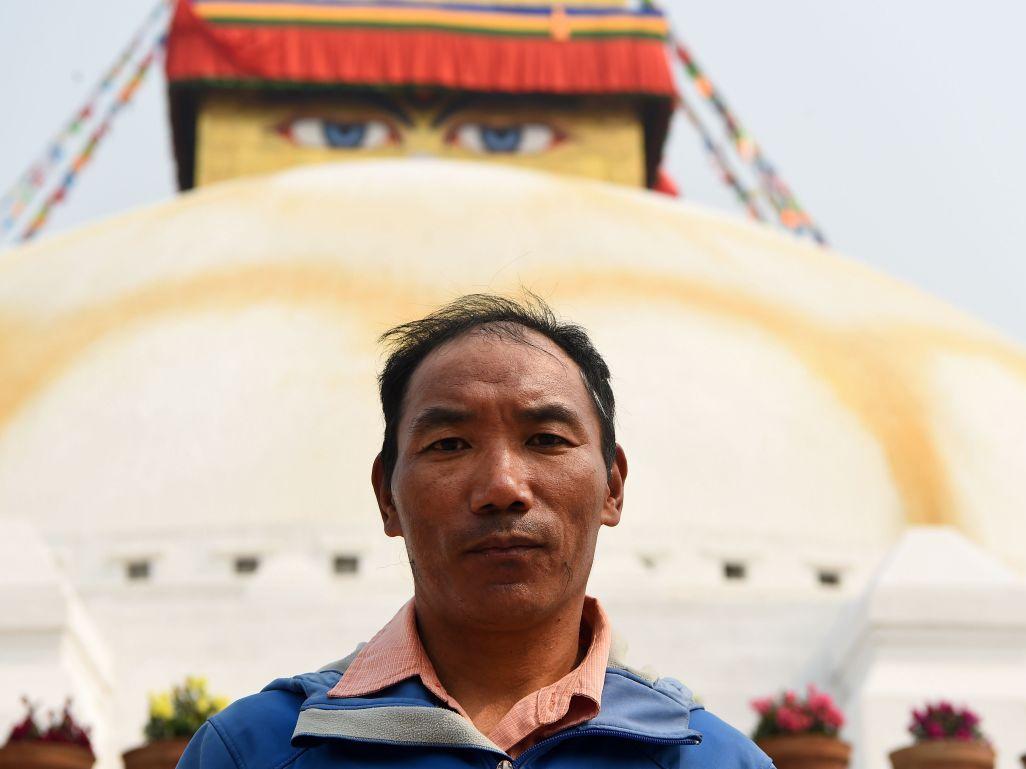Veteran Sherpa tries to reach top of Mount Everest for record-breaking 22nd time
'I have had to keep doing this because I don’t know anything else'

Your support helps us to tell the story
From reproductive rights to climate change to Big Tech, The Independent is on the ground when the story is developing. Whether it's investigating the financials of Elon Musk's pro-Trump PAC or producing our latest documentary, 'The A Word', which shines a light on the American women fighting for reproductive rights, we know how important it is to parse out the facts from the messaging.
At such a critical moment in US history, we need reporters on the ground. Your donation allows us to keep sending journalists to speak to both sides of the story.
The Independent is trusted by Americans across the entire political spectrum. And unlike many other quality news outlets, we choose not to lock Americans out of our reporting and analysis with paywalls. We believe quality journalism should be available to everyone, paid for by those who can afford it.
Your support makes all the difference.Three men have climbed to the top of the world 21 times, all of them mountain guides who grew up in the shadow of Mount Everest. Two of these famed Sherpa guides have retired. But 48-year-old Kami Rita says he’ll be summiting Everest for years to come.
“My goal is to reach the summit of Everest at least 25 times,” he said in Kathmandu, Nepal’s capital, shortly before heading back to the mountain for what he hopes will mark a record-breaking climb. “I want to set a new record not just for myself but for my family, the Sherpa people and for my country, Nepal.”
For Mr Rita, climbing is a family tradition.
His father was among the first professional guides after Nepal opened to foreign trekkers and mountaineers in 1950. His brother has scaled Everest 17 times. Most of his male relatives have reached the top at least once.
He decided to become a guide when he was a child. “Growing up in the village I envied the good clothes and things that people in the village brought back after expeditions,” he said.
He first scaled the 29,035ft Everest at 24 and has made the trip almost every year since then. He has also climbed many of the region’s other high peaks, including K-2, Cho-Oyu, Manaslu and Lhotse. In the autumn, he guides clients to smaller peaks in Nepal.
As a veteran guide, he earns about $10,000 (£7,043) for each Everest climb, an enormous income in a country where most people earn just $700 or so per year.
Life changed for many Sherpa families since 1950. Yak herders and traders who lived in the Himalayan foothills, the Sherpas’ knowledge of the mountains and stamina built over years of walking high-altitude trails made them ideal guides.
The other two summit record-holders are also Sherpas. Apa, a 58-year-old guide who uses only one name, retired in 2011 and moved to Utah. Phurba Tashi, 47, retired from high-altitude climbing in 2013 but still works at Everest’s Base Camp, helping organise expeditions.
“There are many risks in climbing, which is always unpredictable and dangerous. But I have had to keep doing this because I don’t know anything else,” Mr Rita said. Some of the hardest moments for him came when he lost friends in mountaineering accidents.
He was at base camp when an avalanche struck in 2014, killing 16 Sherpa guides, including five from his team. The next year, an earthquake triggered another avalanche that ripped through base camp, killing 19 people. He escaped only because his team’s tents were set up that year on the far side of base camp.
Sherpa guides now have better insurance coverage and the Nepal government has begun issuing certificates for successful climbs to guides too.
“Now we have proof to show our clients of the climbs we have achieved, which helps us,” he said.
In many ways, he says, climbing has become safer in the three decades he’s been working in the mountains, with better equipment and complex weather forecasting to warn of the mountain’s deadly storms.
“The dangers are still there: the crevasses are deep and the slopes are unpredictable. But we are not climbing blind like we used to. We are better informed about weather and other conditions on the mountain,” he said. “Even our clients are more aware and they train themselves for at least a year before attempting Everest.”
Still, he wants the number of Everest climbers to be limited. The mountain has only a brief window of weather good enough for summit attempts, normally in mid-May, a situation that now regularly results in mountaineering traffic jams. “On those days there are hundreds of climbers hanging onto ropes to reach the top,” he said.
Mountaineering has been Mr Rita’s professional life. But it still weighs heavily on his family.
His wife, Lakpa Jangmu, dreads when he leaves for expeditions.
“I keep telling him we could look for other jobs, start a small business,” she said. “But he does not listen to me at all.”
The family profession, though, is ending.
Their two children are in a private school in Kathmandu, getting an education their parents could not have imagined back in their home villages. Mr Rita and Ms Jangmu both insist their children will not be mountain guides.
AP
Join our commenting forum
Join thought-provoking conversations, follow other Independent readers and see their replies
Comments